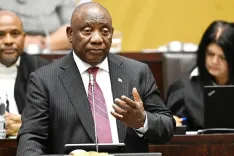Stock Market: A Crucial Time for Investors to Focus on Long-Term Gains

Synopsis
Key Takeaways
- Strong macro fundamentals indicate stability.
- Low inflation at 4.31 percent supports growth.
- Domestic investments are countering foreign sell-offs.
- GDP growth is forecasted at 6.5 percent.
- Monitor key upcoming economic events.
New Delhi, March 2 (NationPress) Even amidst the recent short-term declines, the synergy of strong macroeconomic fundamentals, robust earnings growth, and attractive valuations positions this period as critical for investors aiming at long-term opportunities instead of getting caught up in immediate market fluctuations, as noted by market analysts.
On the macroeconomic side, conditions continue to be stable. Fiscal deficits are manageable, anticipated tax reductions are likely to enhance consumption, inflation is low at 4.31 percent, and interest rate cuts have begun, which should bolster economic growth.
“Domestic investors persist in investing in mutual funds, countering some of the selling pressure from foreign investors. Although pinpointing a precise market bottom is challenging, heightened negativity frequently indicates a potential turning point,” stated Krishna Appala of Capitalmind Research.
The GDP growth accelerated to 6.2 percent in the third quarter (October-December) of 2024-25, rising from a revised figure of 5.6 percent in the preceding quarter of the fiscal year.
The GDP growth rate for the fiscal year 2024-25 is now projected at 6.5 percent, while the economic growth rate for 2023-24 has been revised to a remarkable 12-year high of 8.2 percent.
India’s Q3 FY25 GDP figures have met expectations, with a minor upward adjustment to 6.5 percent for the fiscal year, according to industry experts.
The agriculture sector demonstrated consistent growth in Q3, signaling a possible improvement in kharif crop production, which could enhance rural consumption.
“Investors will be keenly observing significant upcoming events, including tariff policies, the U.S. Core PCE Price Index, and jobless claims. In the short term, market conditions are likely to remain subdued, with a gradual recovery anticipated as earnings strengthen from Q1 FY26 and uncertainties in global trade policy diminish,” remarked Vinod Nair, Head of Research at Geojit Financial Services.
Market trends are not linear, as experts have pointed out.
Additionally, the combination of favorable fiscal policies that promote both capital expenditure and consumption, along with easing monetary policies across all fronts—rates, liquidity, and regulations—coupled with strong services exports that bode well for the job market, are expected to support India’s growth momentum, according to a report from Morgan Stanley.










